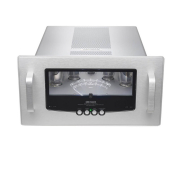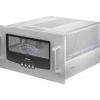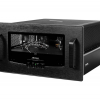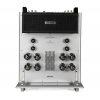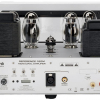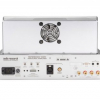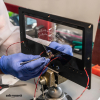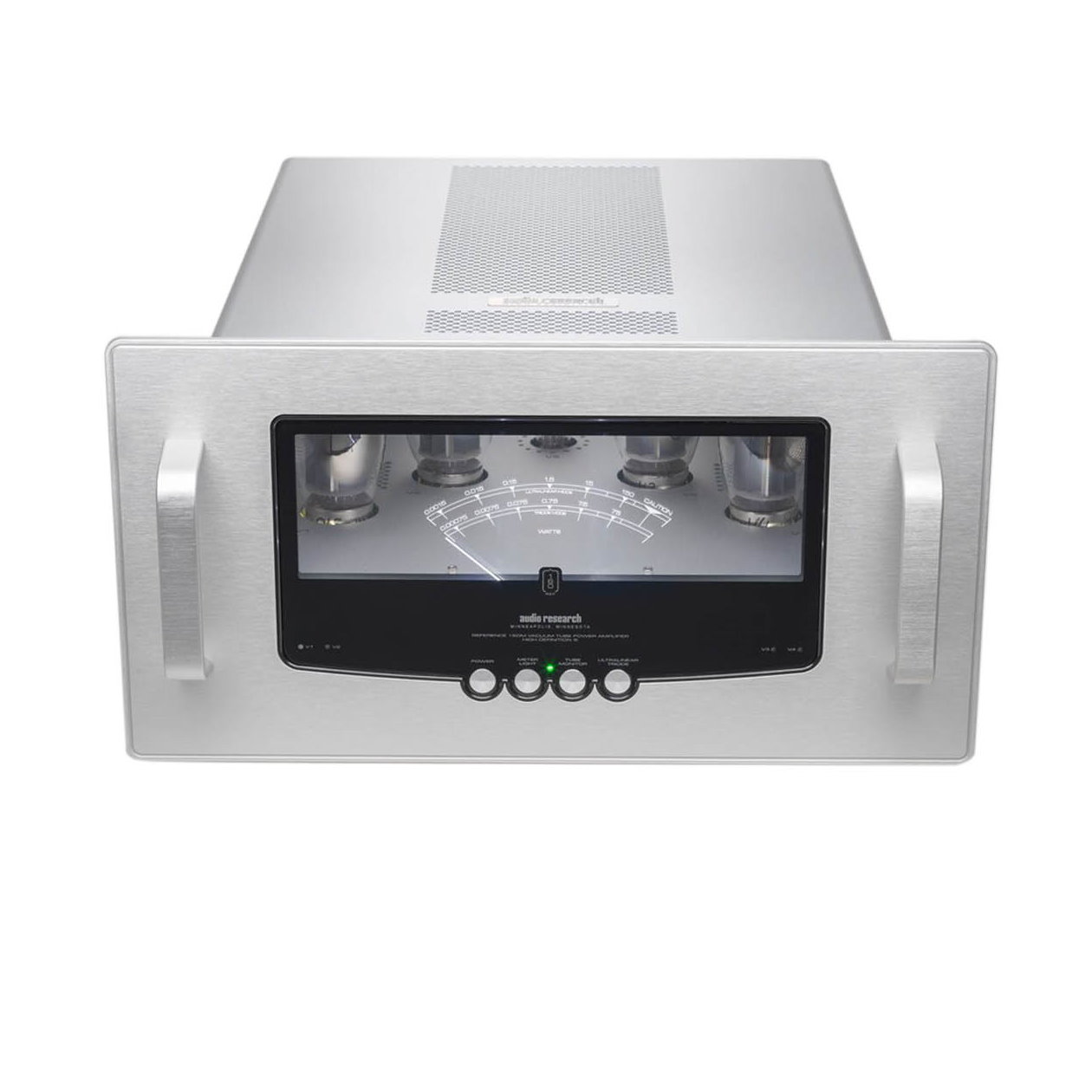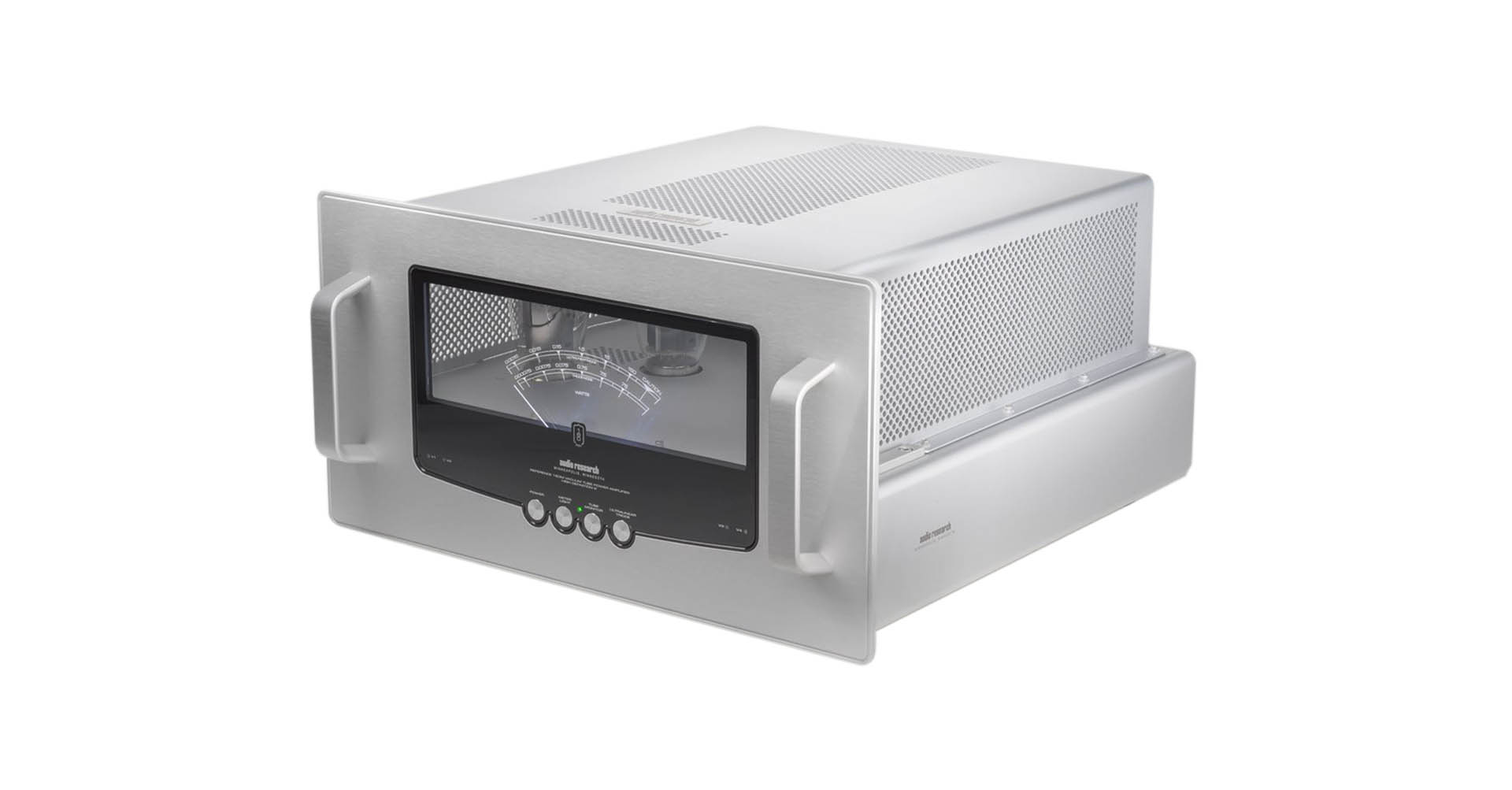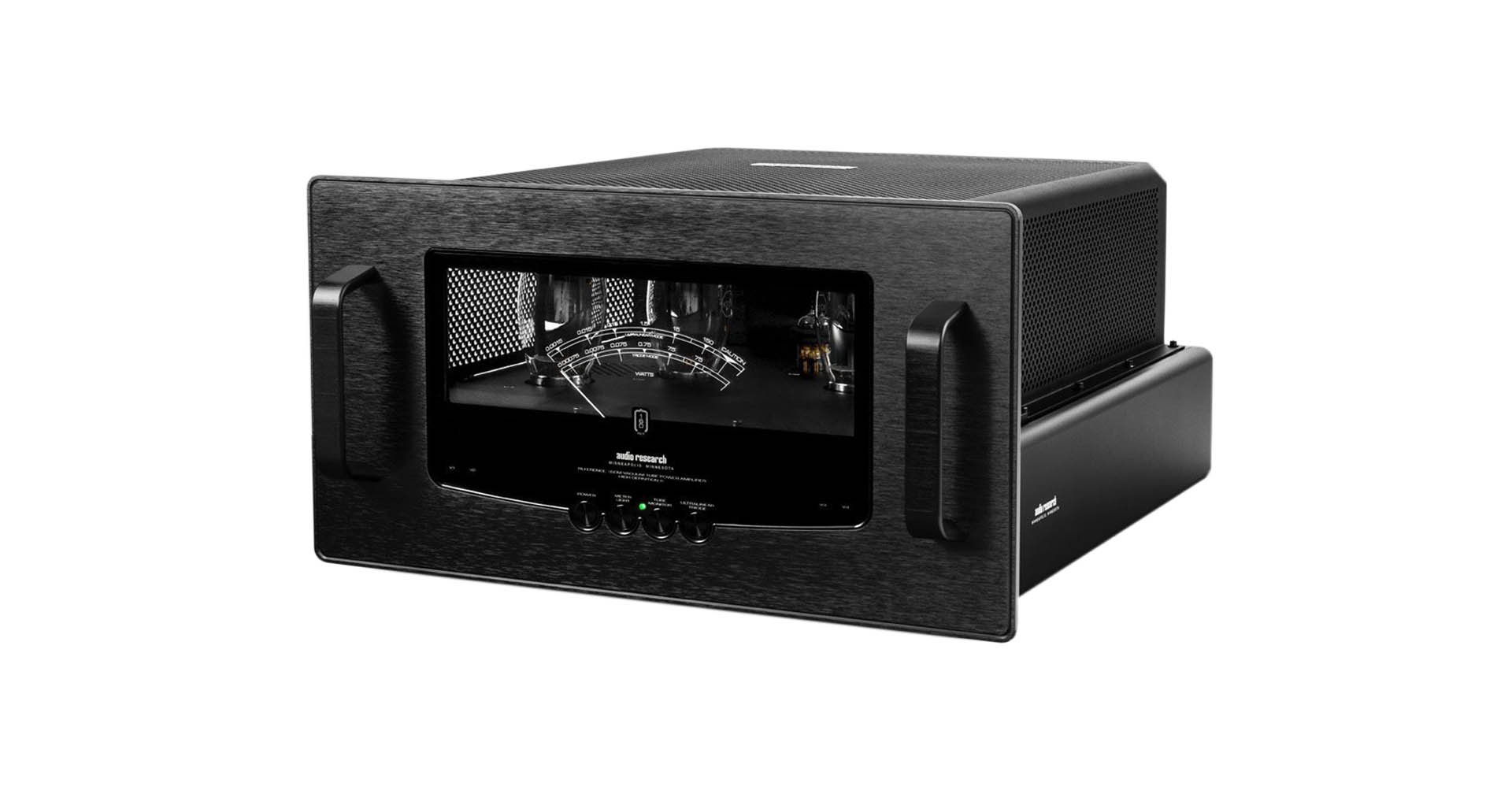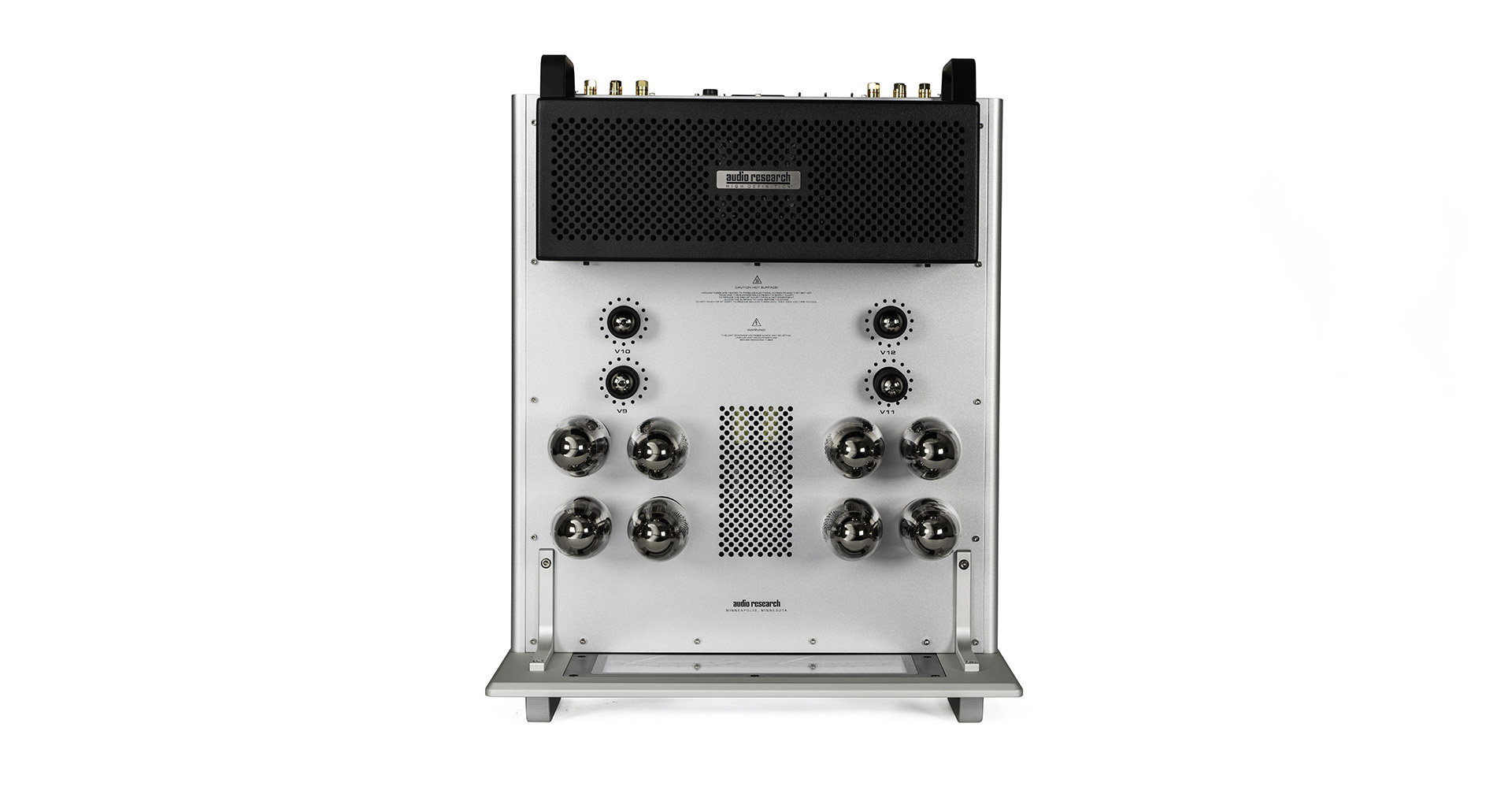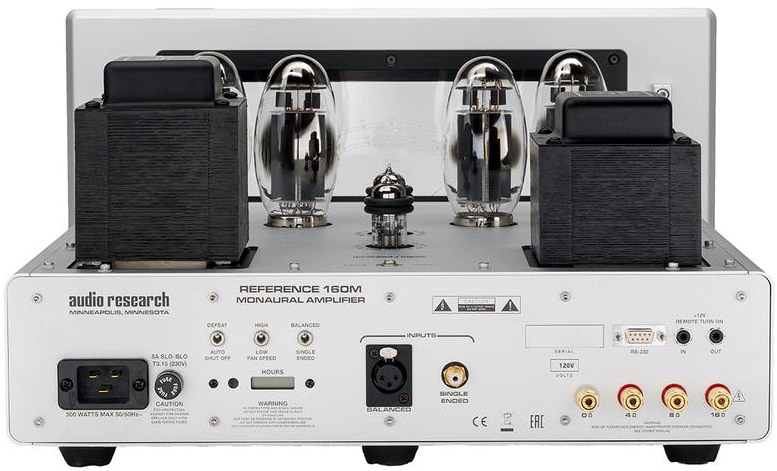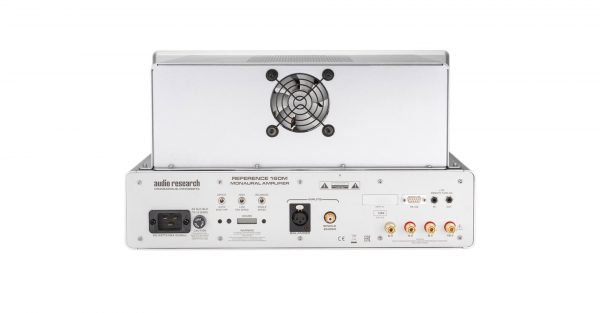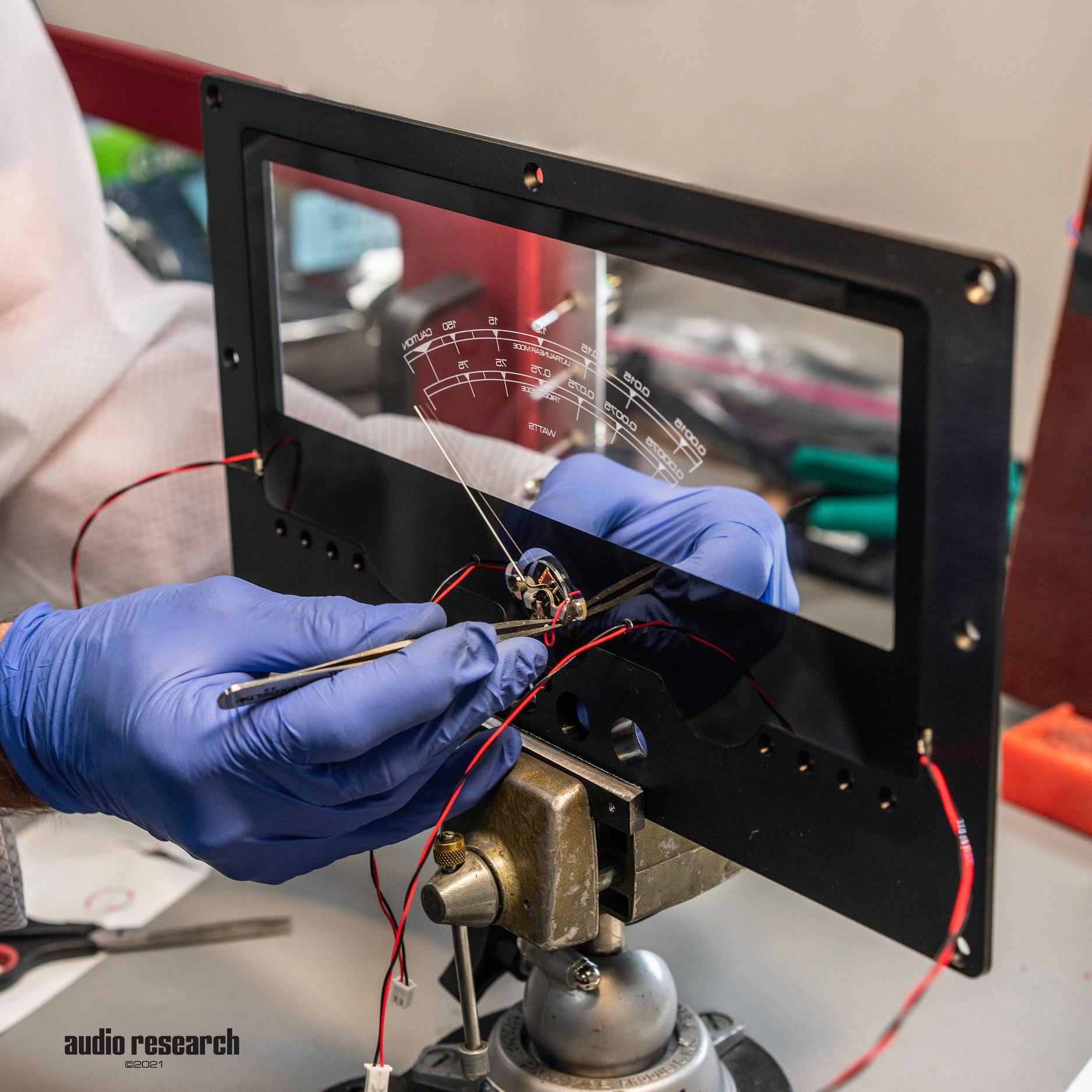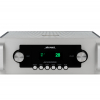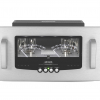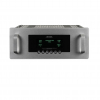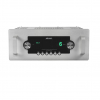- AUDIO ONE-TO-ONE Call Now: 210-805-9927
- Contact
- Register
- My Account
Audio Research Reference 160M Mk II Mono Amplifier
Audio Research Reference 160M Mk II Mono Amplifier
Audio Research Reference 160M Mk II Mono Amplifier
Not available online, please call to order.
210-805-9927
Audio Research Reference 160M Mk II Mono Amplifier
Not available online, please call to order.
210-805-9927
Description

MY TAKE: Probably no other name in high-end audio enjoys the reputation, recognition, and respect of Audio Research. Since the beginning, Audio Research has maintained a fanatical devotion to quality and sonic performance, ensuring their position at the very top echelon of audio manufacturers. Their offerings earn my highest recommendations. – Galen Carol
After two years in development, the new Reference 160M (REF160M) Monoblock Power Amplifier is built like no other, looks like no other, and sounds like no other amplifier that you have ever heard, but it is unmistakably Audio Research. It features a refined audio topology with fewer and better components in the signal-path than in previous designs, switchable Ultralinear/Triode operation, proprietary auto-bias, output tube monitoring and protection, an advanced power meter, and much more. This array of features has never been offered before in an Audio Research amplifier.
The designers at Audio Research wanted to create a new style that would complement the look of the REF6 preamp while also featuring a GhostMeter™ that allows a view of the glowing KT150 vacuum tubes. While this GhostMeter™ allows you to see the output tubes, it also incorporates an innovative dual-layer construction with distinctively etched markings that create an integrated power meter. The power meter’s output-level markings illuminate via hidden LEDs, and the illumination brightness is adjustable. The REF160M includes a sculpted cover with an integrated fan to cool the heat generated by the four (4) KT150 output tubes and two (2) 6H30 driver tubes. Solid-state power regulation was chosen to provide increased efficiency, stability, and reliability. The power supply stage uses a newly developed High Energy Capacity Transformer and a hefty bulk storage-capacity network to provide extremely high current on demand for transient peaks and intense dynamics, as well as for prodigious bass depth and authority.
It is understood that the best path is the shortest path. Audio Research engineers created a new audio circuit topology with the shortest signal path and the fewest components. Those components are not only the best available, many are custom made for Audio Research. Incorporating these quality components is a special 4-layer circuit board that lowers the noise floor to unprecedented levels and a design that was previously reserved for use in our preamplifiers. The result is a new benchmark in musicality in every criterion of sound quality.
The REF160M also features a proprietary auto-bias circuit that works with various tube types, including 6550, KT88, and KT120, in addition to the supplied KT150 and works constantly to maintain precise bias of the output tubes, while also adjusting for tube wear. There is no need to check or adjust bias ever again.
The new REF160M breaks new ground sonically, aesthetically and operationally, and will be available in Natural (Silver) or Black finishes.
REVIEWS:
Stereophile: "From the get-go, music through the Reference 160Ms elicited a loud "Whoa!" In short order, all my expectations of what I'd thought was ARC's house sound—and the sound of most tubed gear—went out the window.
"Simply delicious," I wrote in my notes. I especially noticed a musical transition about four minutes in, when the violin, guitar, and theorbo take over from the bubbling organ. When instrumental lines doubled, the sound was just yummy. When everybody revved up at once and the intensity increased, hard-to-distinguish details and sonorities emerged with clarity.
"Of all the power amplifiers, integrated amplifiers, and pre-power combinations to have spent time in my reference system, the pairing of Audio Research's tubed Reference 160M monoblocks and REF 6 preamplifier stands out as having sounded the most musically neutral and natural. Other components may offer more warmth and glow, or wider soundstages, or greater dynamic contrast, or more bass slam, transparency, and detail—but there was an inherent rightness to the sound of this supremely musical ARC pairing that puts it in a class by itself.
"Since hearing the Reference 160Ms and REF 6 together, all of my preconceptions about the sound of tubed equipment have gone out the window. While choosing an amplifier will always be based upon many factors—economic means, personal taste, and the willingness to monitor and occasionally replace tubes among them—I'm convinced that the Reference 160M will find a home on many a solar- or wind-powered desert island. It's that good." - Jason Victor Serinus
Absolute Sound: "So there you have it. The ARC Reference 160M is a definitive product from a company that has produced a long series of definitive products. Two years in development, it represents Audio Research’s latest and most advanced thinking—and its sexiest packaging. Whether you will like it as much as I do will depend on your listening priorities and, to some extent, your speakers. But at its best the 160M offers things I’ve never heard before from an ARC amp: a newfound control that makes for “higher definition” from top to bottom; a standard-settingly low noise floor; a naturally richer and more neutral tonal palette; a naturally fuller power range; somewhat better focused and less midrange-forward imaging; and an even-handed presentation of the dynamic/harmonic envelope that no other amplifier I’m familiar with can better. Oh, the sentimental part of me still rather misses some of the wild-and-woolly qualities of ARC’s vintage 6550-based WZJ amps (higher noise and all), but that doesn’t change the fact that the REF160M is a more realistic-sounding, more transparent-to-sources, and more convenient-to-use offering. Obviously, the REF160M receives my highest recommendation. It is a reference-quality amplifier (and in its reproduction of the dynamic/harmonic envelope, a standard-setting one) that every music lover should hear." - Jonathan ValinAudio Research REF160M Receives The Golden Ear Award - In this annual feature of The Absolute Sound, each writer recommends components that stand out from the competition. This selective list includes long-time references as well as new favorites. The REF160M has been selected for this prestigious award.
HiFi News: "The REF160Ms balanced sheer power with delicate nuance to a degree that, sadly, cannot be offered by low-power tube classics. As one who has used all but the most monstrously huge Reference models during the series’ entire span, and as a devotee of the REF75, I wasn’t prepared for such a massive leap in capabilities. Audio Research will continue to deliver models with thrice the power, but they’ll have to endow them with the ’160M’s grace."This amplifier has assault capabilities to threaten other amps with far more wattage."
"By any measure, the real worth of this amplifier is how much it keeps you from switching it off. This is the hi-fi equivalent of a TV box set, when you think, ‘Just one more episode of Gomorrah won’t hurt’ and it’s 4am. I wanted to hear the crystalline
vocals and matchless harmonies of The Judds’ version of ‘Sleepless Nights’ on River Of Time [Curb ZL74127 LP]. It was a revelation. Even the abysmally recorded, musically sublime, one-off from Ayers/Cale/Nico/Eno, June 1, 1974 [Island ILPS9291], was tolerable. The system cut through the murk and the REF160Ms worked with what they were fed. And perhaps that’s the highest tribute one can pay – when a system makes palatable even the unlistenable. Yes, this Audio Research amp can work miracles."I suffer no hesitation in judging it one of the finest amplifiers I have ever heard, regardless of price." - Ken Kessler
HiFi Critic: "This valve/tube amplifier is powerful and essentially load tolerant, so well suited to high-end audio systems. While that visually dominating power meter on the front panel is quite inaccurate, all else found in this design operated to a high level of dependable precision, and the lab test report showed that it met its claimed specifications well. Audio Research power amplifiers have continued to improve, and the Reference 160M is a very fine example. providing excellent musical entertainment
over the review period. Undoubtedly HIFICRITIC Audio Excellence, our strong recommendation comes without any question of a doubt."
Soundstage! Ultra: "The Reference 160Ms, on the other hand, made music sound and feel more real by reproducing it with a greater sense of space; higher levels of tonal color; richer, weightier, more dimensional images; and more inner details presented on more natural-sounding soundstages. It’s ironic that the less-accurate-sounding amps actually sounded more appealingly real overall, but that’s what happened during these comparisons, track after track. It was like comparing a BMW 7 series with a Maserati Quattroporte: both were exhilarating rides, for very different reasons."In the end . . .
"During my time with the Reference 160Ms, I was constantly reminded of the lengths to which Audio Research has gone to make such giant leaps forward in build quality, sound quality, ergonomics, and visual appearance. The Reference 160M’s build quality is exceptional, and despite some minor niggles, its ergonomics aren’t far off either. This amplifier is also drop-dead gorgeous to look at, and the etched, dimmable meters are the most innovative implementation of a wattmeter I’ve ever seen. I found the Reference 160M captivatingly enjoyable to listen to, despite a slight roundness and lack of texture in the bass" - Aron Garrecht
HiFi+: "Audio Research has a fine reputation for making excellent valve power amplifiers, cemented in place over almost half a century. But in Audio Research’s 48-year history, few power amplifiers have been quite so universally praised as the Reference 160M mono power amplifiers. The company brings several new – or, at least, new to Audio Research – technologies to bear. This is the first power amplifier from the brand to use an innovative microprocessor-controlled auto-bias system, for example, and is the first from the ARC family to be able to switch between ultralinear and triode operation at the touch of a button. And then there’s those power meters, cleverly lit by LEDs mounted into the front panel; it’s a design that still harks back to classic Audio Research, but is as modern as it gets. The use of four KT150 power valves per channel is new in the valve world, too; Audio Research has been adopting these power valves throughout the range, but this is where they really get to shine.
In our test, we concluded that, “I’ve played with a number of Audio Research amps over the years, many of which have been some of the most memorable musical experiences I’ve had, but I can’t shake the notion that this is the best of them. It’s so musically faithful yet so musically entertaining and enjoyable, this takes the already high standards of Audio Research and raises them to new levels. It delivers grace, space, and no small dose of pace, too.”
HiFi + Amplifier of the Year Award Winner
AudioVideo: "I was immediately struck by the full, tactile delivery of the amps. They exuded a distinctive body and presence that was arresting, yet never became overbearing or bloated. There was a delicious richness that allowed the Ref 160Ms to communicate their musical message with substance and authenticity. As a result, it was easy to identify the actual performers on the large, almost cinematic soundstage. There was no shortage of low-frequency energy: the bass was bountiful, but still well controlled and incisive. The midrange was a particular highlight, offering a combination of smooth liquidity and texture that really made the music come alive."I expected the trebles to be sweet and sleek, and indeed, they were certainly elegant and approachable. But there was no sense of the exaggerated glow or burnish that can sometimes typecast valve amps: the high frequency detail remained crisp, clear and ultimately revealing. The monoblocks easily kept up with the pace and the dynamics of the music without belabouring the point. To their credit, they produced a sound that was always more like music than hi-fi: the electronics took a back seat in favour of emotion and pathos. However, it was the ability of the Ref 160Ms to recreate the stature and the presence of the music that impressed most. They endowed the sound with an almost physical charisma that made it easy to forget that I was listening to recorded music. Acoustic guitars had just the right shimmer and polish, and bass lines were delivered with impact, yet not confrontationally so. Vocals were endowed with a three-dimensional presence, bolstered by the realism of tone and texture.
"Adding to the sense of involvement was a soundstage that was spectacularly open and unencumbered, allowing the music free rein, and creating a sound picture that refused to be contained by the physical boundaries of the room. The sound picture was panoramic, but not exaggerated, affording the music as much space and air as it needed, but without overstating the musical case. Imaging was beautifully three-dimensional, adding to the sense of experiencing the music, rather than just listening to it. The sound was unequivocally believable, but the system never allowed the accuracy or precision of the delivery to get in the way of the music’s emotive content. I was impressed with the way the monoblocks provided huge lashings of control and headroom, even at higher listening levels, without getting in the way of the music’s flow. For all their pace and kick, there was an intoxicating ease and accessibility to the music that always had me looking for another disc to play.
"If there is a criticism, it was that the bass could be a tad overstated on certain recordings, but it may well be that the all-tube front-end fed the Sonus Faber's a musical diet that was just a little too rich at times. Even so, the overall transparency and accessibility of the system was laudable, allowing an engaging and above all entertaining listening experience. Yes, the Audio Research Reference 160Ms are something special – and not just because they look spectacular!"
The Absolute Sound: "The winning combination of a low noise floor, which allows details to emerge in an unforced way, and very high levels of image solidity, which produces a closer-to-live listening experience, is central to the Ref160S’s appeal. Add in uncommonly good bass presence and dynamic control, and you have a tube amp that goes a long way to furthering the strengths of valves while mitigating their typical weaknesses.To my mind, the Ref160S doesn’t try to sound like a solid-state amp as such; it is, rather, a high-quality amp in its own right, and can outperform most solid-state designs in depth layering and musical fluidity. If you feel like venturing into the glories of tubes or continuing your tube amp adventures on a different plane, consider the Ref160S. It is highly recommended." - Kirk Midskog
ELECTRONIC SPECIFICATIONS -
POWER OUTPUT: 140 watts continuous from 20Hz to 20kHz. 1kHz total harmonic distortion typically 1% at 140 watts, below 0.04% at 1 watt. (Note that actual power output is dependent upon both line voltage and “condition” i.e.: if the power line has high distortion, maximum power will be affected adversely, although from a listening standpoint this is not critical).
POWER BANDWIDTH: (-3dB Points) 5Hz to 70kHz.
FREQUENCY RESPONSE: (-3dB points at 1 watt) 0.5Hz to 110kHz.
INPUT SENSITIVITY: 2.4V RMS Balanced for rated output. (25.5 dB gain into 8 ohms).
INPUT IMPEDANCE: 200 k ohms Balanced.
OUTPUT POLARITY: Non-inverting. Balanced input pin 2+ (IEC-268).
OUTPUT TAPS: 16 ohms, 8 ohms, 4 ohms.
OUTPUT REGULATION: Approximately 0.6dB 16 OHM LOAD TO OPEN CIRCUIT (Damping factor approximately 14).
OVERALL NEGATIVE FEEDBACK: 14dB
SLEW RATE: 13 volts/microsecond RISE TIME: 2.0 microseconds.
POWER REQUIREMENTS: 105-130VAC 60Hz (210-250VAC 50Hz) 400 watts at rated output, 700 watts maximum, 260 watts at “idle”, 1 watt off.
TUBES REQUIRED: 2 matched pair KT150 (Power output V1-4); 2 6H30 (Gain stage V5 and V6).
DIMENSIONS: Width 17.25” (43.8 cm), Height 10” (25.4 cm), Depth 18.5” (47 cm), Handles Extended 19.25” (48.9 cm)
WEIGHT: 56lbs (25.5 kg) Net, 73lbs (33.2 kg) Shipping

Audio Research Reference 160M Mk II Mono Amplifier
Not available online, please call to order.
210-805-9927
Description

MY TAKE: Probably no other name in high-end audio enjoys the reputation, recognition, and respect of Audio Research. Since the beginning, Audio Research has maintained a fanatical devotion to quality and sonic performance, ensuring their position at the very top echelon of audio manufacturers. Their offerings earn my highest recommendations. – Galen Carol
After two years in development, the new Reference 160M (REF160M) Monoblock Power Amplifier is built like no other, looks like no other, and sounds like no other amplifier that you have ever heard, but it is unmistakably Audio Research. It features a refined audio topology with fewer and better components in the signal-path than in previous designs, switchable Ultralinear/Triode operation, proprietary auto-bias, output tube monitoring and protection, an advanced power meter, and much more. This array of features has never been offered before in an Audio Research amplifier.
The designers at Audio Research wanted to create a new style that would complement the look of the REF6 preamp while also featuring a GhostMeter™ that allows a view of the glowing KT150 vacuum tubes. While this GhostMeter™ allows you to see the output tubes, it also incorporates an innovative dual-layer construction with distinctively etched markings that create an integrated power meter. The power meter’s output-level markings illuminate via hidden LEDs, and the illumination brightness is adjustable. The REF160M includes a sculpted cover with an integrated fan to cool the heat generated by the four (4) KT150 output tubes and two (2) 6H30 driver tubes. Solid-state power regulation was chosen to provide increased efficiency, stability, and reliability. The power supply stage uses a newly developed High Energy Capacity Transformer and a hefty bulk storage-capacity network to provide extremely high current on demand for transient peaks and intense dynamics, as well as for prodigious bass depth and authority.
It is understood that the best path is the shortest path. Audio Research engineers created a new audio circuit topology with the shortest signal path and the fewest components. Those components are not only the best available, many are custom made for Audio Research. Incorporating these quality components is a special 4-layer circuit board that lowers the noise floor to unprecedented levels and a design that was previously reserved for use in our preamplifiers. The result is a new benchmark in musicality in every criterion of sound quality.
The REF160M also features a proprietary auto-bias circuit that works with various tube types, including 6550, KT88, and KT120, in addition to the supplied KT150 and works constantly to maintain precise bias of the output tubes, while also adjusting for tube wear. There is no need to check or adjust bias ever again.
The new REF160M breaks new ground sonically, aesthetically and operationally, and will be available in Natural (Silver) or Black finishes.
REVIEWS:
Stereophile: "From the get-go, music through the Reference 160Ms elicited a loud "Whoa!" In short order, all my expectations of what I'd thought was ARC's house sound—and the sound of most tubed gear—went out the window.
"Simply delicious," I wrote in my notes. I especially noticed a musical transition about four minutes in, when the violin, guitar, and theorbo take over from the bubbling organ. When instrumental lines doubled, the sound was just yummy. When everybody revved up at once and the intensity increased, hard-to-distinguish details and sonorities emerged with clarity.
"Of all the power amplifiers, integrated amplifiers, and pre-power combinations to have spent time in my reference system, the pairing of Audio Research's tubed Reference 160M monoblocks and REF 6 preamplifier stands out as having sounded the most musically neutral and natural. Other components may offer more warmth and glow, or wider soundstages, or greater dynamic contrast, or more bass slam, transparency, and detail—but there was an inherent rightness to the sound of this supremely musical ARC pairing that puts it in a class by itself.
"Since hearing the Reference 160Ms and REF 6 together, all of my preconceptions about the sound of tubed equipment have gone out the window. While choosing an amplifier will always be based upon many factors—economic means, personal taste, and the willingness to monitor and occasionally replace tubes among them—I'm convinced that the Reference 160M will find a home on many a solar- or wind-powered desert island. It's that good." - Jason Victor Serinus
Absolute Sound: "So there you have it. The ARC Reference 160M is a definitive product from a company that has produced a long series of definitive products. Two years in development, it represents Audio Research’s latest and most advanced thinking—and its sexiest packaging. Whether you will like it as much as I do will depend on your listening priorities and, to some extent, your speakers. But at its best the 160M offers things I’ve never heard before from an ARC amp: a newfound control that makes for “higher definition” from top to bottom; a standard-settingly low noise floor; a naturally richer and more neutral tonal palette; a naturally fuller power range; somewhat better focused and less midrange-forward imaging; and an even-handed presentation of the dynamic/harmonic envelope that no other amplifier I’m familiar with can better. Oh, the sentimental part of me still rather misses some of the wild-and-woolly qualities of ARC’s vintage 6550-based WZJ amps (higher noise and all), but that doesn’t change the fact that the REF160M is a more realistic-sounding, more transparent-to-sources, and more convenient-to-use offering. Obviously, the REF160M receives my highest recommendation. It is a reference-quality amplifier (and in its reproduction of the dynamic/harmonic envelope, a standard-setting one) that every music lover should hear." - Jonathan Valin
Audio Research REF160M Receives The Golden Ear Award - In this annual feature of The Absolute Sound, each writer recommends components that stand out from the competition. This selective list includes long-time references as well as new favorites. The REF160M has been selected for this prestigious award.
HiFi News: "The REF160Ms balanced sheer power with delicate nuance to a degree that, sadly, cannot be offered by low-power tube classics. As one who has used all but the most monstrously huge Reference models during the series’ entire span, and as a devotee of the REF75, I wasn’t prepared for such a massive leap in capabilities. Audio Research will continue to deliver models with thrice the power, but they’ll have to endow them with the ’160M’s grace.
"This amplifier has assault capabilities to threaten other amps with far more wattage."
"By any measure, the real worth of this amplifier is how much it keeps you from switching it off. This is the hi-fi equivalent of a TV box set, when you think, ‘Just one more episode of Gomorrah won’t hurt’ and it’s 4am. I wanted to hear the crystalline
vocals and matchless harmonies of The Judds’ version of ‘Sleepless Nights’ on River Of Time [Curb ZL74127 LP]. It was a revelation. Even the abysmally recorded, musically sublime, one-off from Ayers/Cale/Nico/Eno, June 1, 1974 [Island ILPS9291], was tolerable. The system cut through the murk and the REF160Ms worked with what they were fed. And perhaps that’s the highest tribute one can pay – when a system makes palatable even the unlistenable. Yes, this Audio Research amp can work miracles.
"I suffer no hesitation in judging it one of the finest amplifiers I have ever heard, regardless of price." - Ken Kessler
HiFi Critic: "This valve/tube amplifier is powerful and essentially load tolerant, so well suited to high-end audio systems. While that visually dominating power meter on the front panel is quite inaccurate, all else found in this design operated to a high level of dependable precision, and the lab test report showed that it met its claimed specifications well. Audio Research power amplifiers have continued to improve, and the Reference 160M is a very fine example. providing excellent musical entertainment
over the review period. Undoubtedly HIFICRITIC Audio Excellence, our strong recommendation comes without any question of a doubt."
Soundstage! Ultra: "The Reference 160Ms, on the other hand, made music sound and feel more real by reproducing it with a greater sense of space; higher levels of tonal color; richer, weightier, more dimensional images; and more inner details presented on more natural-sounding soundstages. It’s ironic that the less-accurate-sounding amps actually sounded more appealingly real overall, but that’s what happened during these comparisons, track after track. It was like comparing a BMW 7 series with a Maserati Quattroporte: both were exhilarating rides, for very different reasons.
"In the end . . .
"During my time with the Reference 160Ms, I was constantly reminded of the lengths to which Audio Research has gone to make such giant leaps forward in build quality, sound quality, ergonomics, and visual appearance. The Reference 160M’s build quality is exceptional, and despite some minor niggles, its ergonomics aren’t far off either. This amplifier is also drop-dead gorgeous to look at, and the etched, dimmable meters are the most innovative implementation of a wattmeter I’ve ever seen. I found the Reference 160M captivatingly enjoyable to listen to, despite a slight roundness and lack of texture in the bass" - Aron Garrecht
HiFi+: "Audio Research has a fine reputation for making excellent valve power amplifiers, cemented in place over almost half a century. But in Audio Research’s 48-year history, few power amplifiers have been quite so universally praised as the Reference 160M mono power amplifiers. The company brings several new – or, at least, new to Audio Research – technologies to bear. This is the first power amplifier from the brand to use an innovative microprocessor-controlled auto-bias system, for example, and is the first from the ARC family to be able to switch between ultralinear and triode operation at the touch of a button. And then there’s those power meters, cleverly lit by LEDs mounted into the front panel; it’s a design that still harks back to classic Audio Research, but is as modern as it gets. The use of four KT150 power valves per channel is new in the valve world, too; Audio Research has been adopting these power valves throughout the range, but this is where they really get to shine.
In our test, we concluded that, “I’ve played with a number of Audio Research amps over the years, many of which have been some of the most memorable musical experiences I’ve had, but I can’t shake the notion that this is the best of them. It’s so musically faithful yet so musically entertaining and enjoyable, this takes the already high standards of Audio Research and raises them to new levels. It delivers grace, space, and no small dose of pace, too.”
HiFi + Amplifier of the Year Award Winner
AudioVideo: "I was immediately struck by the full, tactile delivery of the amps. They exuded a distinctive body and presence that was arresting, yet never became overbearing or bloated. There was a delicious richness that allowed the Ref 160Ms to communicate their musical message with substance and authenticity. As a result, it was easy to identify the actual performers on the large, almost cinematic soundstage. There was no shortage of low-frequency energy: the bass was bountiful, but still well controlled and incisive. The midrange was a particular highlight, offering a combination of smooth liquidity and texture that really made the music come alive.
"I expected the trebles to be sweet and sleek, and indeed, they were certainly elegant and approachable. But there was no sense of the exaggerated glow or burnish that can sometimes typecast valve amps: the high frequency detail remained crisp, clear and ultimately revealing. The monoblocks easily kept up with the pace and the dynamics of the music without belabouring the point. To their credit, they produced a sound that was always more like music than hi-fi: the electronics took a back seat in favour of emotion and pathos. However, it was the ability of the Ref 160Ms to recreate the stature and the presence of the music that impressed most. They endowed the sound with an almost physical charisma that made it easy to forget that I was listening to recorded music. Acoustic guitars had just the right shimmer and polish, and bass lines were delivered with impact, yet not confrontationally so. Vocals were endowed with a three-dimensional presence, bolstered by the realism of tone and texture.
"Adding to the sense of involvement was a soundstage that was spectacularly open and unencumbered, allowing the music free rein, and creating a sound picture that refused to be contained by the physical boundaries of the room. The sound picture was panoramic, but not exaggerated, affording the music as much space and air as it needed, but without overstating the musical case. Imaging was beautifully three-dimensional, adding to the sense of experiencing the music, rather than just listening to it. The sound was unequivocally believable, but the system never allowed the accuracy or precision of the delivery to get in the way of the music’s emotive content. I was impressed with the way the monoblocks provided huge lashings of control and headroom, even at higher listening levels, without getting in the way of the music’s flow. For all their pace and kick, there was an intoxicating ease and accessibility to the music that always had me looking for another disc to play.
"If there is a criticism, it was that the bass could be a tad overstated on certain recordings, but it may well be that the all-tube front-end fed the Sonus Faber's a musical diet that was just a little too rich at times. Even so, the overall transparency and accessibility of the system was laudable, allowing an engaging and above all entertaining listening experience. Yes, the Audio Research Reference 160Ms are something special – and not just because they look spectacular!"
The Absolute Sound: "The winning combination of a low noise floor, which allows details to emerge in an unforced way, and very high levels of image solidity, which produces a closer-to-live listening experience, is central to the Ref160S’s appeal. Add in uncommonly good bass presence and dynamic control, and you have a tube amp that goes a long way to furthering the strengths of valves while mitigating their typical weaknesses.
To my mind, the Ref160S doesn’t try to sound like a solid-state amp as such; it is, rather, a high-quality amp in its own right, and can outperform most solid-state designs in depth layering and musical fluidity. If you feel like venturing into the glories of tubes or continuing your tube amp adventures on a different plane, consider the Ref160S. It is highly recommended." - Kirk Midskog
ELECTRONIC SPECIFICATIONS -
POWER OUTPUT: 140 watts continuous from 20Hz to 20kHz. 1kHz total harmonic distortion typically 1% at 140 watts, below 0.04% at 1 watt. (Note that actual power output is dependent upon both line voltage and “condition” i.e.: if the power line has high distortion, maximum power will be affected adversely, although from a listening standpoint this is not critical).
POWER BANDWIDTH: (-3dB Points) 5Hz to 70kHz.
FREQUENCY RESPONSE: (-3dB points at 1 watt) 0.5Hz to 110kHz.
INPUT SENSITIVITY: 2.4V RMS Balanced for rated output. (25.5 dB gain into 8 ohms).
INPUT IMPEDANCE: 200 k ohms Balanced.
OUTPUT POLARITY: Non-inverting. Balanced input pin 2+ (IEC-268).
OUTPUT TAPS: 16 ohms, 8 ohms, 4 ohms.
OUTPUT REGULATION: Approximately 0.6dB 16 OHM LOAD TO OPEN CIRCUIT (Damping factor approximately 14).
OVERALL NEGATIVE FEEDBACK: 14dB
SLEW RATE: 13 volts/microsecond RISE TIME: 2.0 microseconds.
POWER REQUIREMENTS: 105-130VAC 60Hz (210-250VAC 50Hz) 400 watts at rated output, 700 watts maximum, 260 watts at “idle”, 1 watt off.
TUBES REQUIRED: 2 matched pair KT150 (Power output V1-4); 2 6H30 (Gain stage V5 and V6).
DIMENSIONS: Width 17.25” (43.8 cm), Height 10” (25.4 cm), Depth 18.5” (47 cm), Handles Extended 19.25” (48.9 cm)
WEIGHT: 56lbs (25.5 kg) Net, 73lbs (33.2 kg) Shipping


